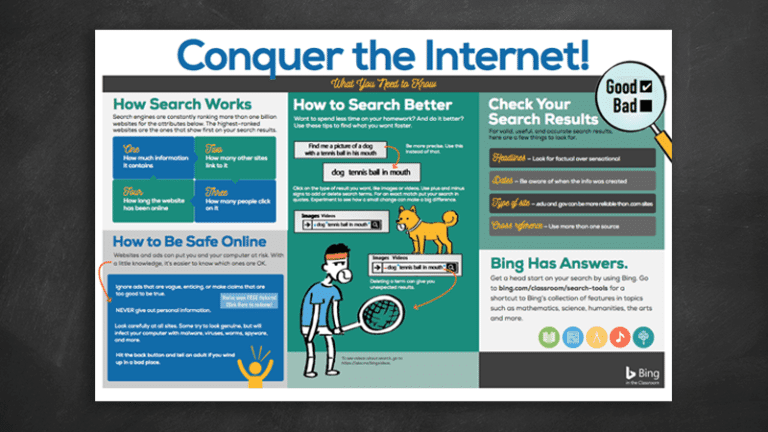Teaching the fundamentals of writing can mean helping students understand the basics of storytelling, but it can also boil down to the mechanics of pencil on paper, or the nuts and bolts of touch typing and keyboarding skills. Teaching writing fundamentals, in other words, means helping them get their ideas down in a shareable form. Here are some great ways to approach your writing and typing lessons that will boost your students’ interest in perfecting the craft.
1. View and do.
Heather F. in Fort Worth was working on a STEM challenge with her third grade class to make a compost bin. “I looked on YouTube for videos about compost bins and found a Peppa Pig episode that worked well to show the concept of composting. My kids LOVED it!” The video and hands-on lesson served as the perfect writing prompt: They’d watched a video and worked with their hands before being given a writing assignment to discuss how composting might alleviate overflowing landfills. In general, videos are great idea generators for writing exercises.
2. Send e-cards.
Use any occasion (student birthdays, holidays, the end of a learning unit or even a welcome Friday!) as motivation to send class e-cards. Your students will have fun picking themes for their cards and crafting their custom messages. They will gain practice using the keyboard, writing clear and correct greetings, and using email and practicing other digital skills. Check out the free options at PaperlessPost and 123Greetings.

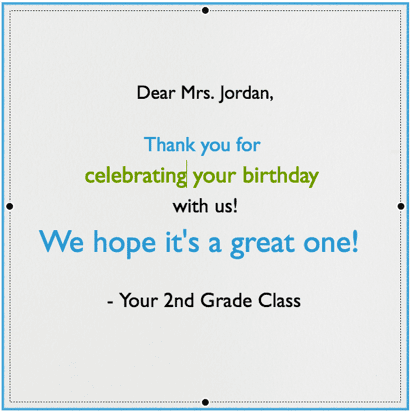
3. Kickstart their keyboarding.
Learning where the keys are on the keyboard and becoming comfortable using both hands are important skills for young students who may be stuck at the two-finger pecking stage. Keyboard Builder, Frog Pond Patrol and other TypeTastic! games from typetastic.com are fun introductions to keyboarding skills for kids in grades K–3. You can set your kids up on computers or tablets, depending on what works for you.
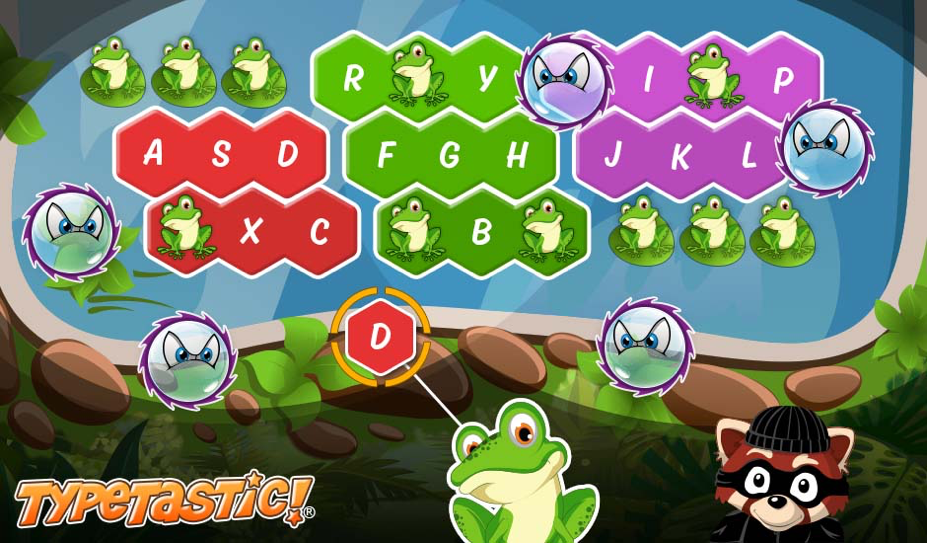
4. Share the keyboard.
With early elementary kids, it is important to model the writing process. One of the ways to do this is by sharing the pen, which This Reading Mama describes in her writing lessons. “As we write, we talk about capital letters, letter formation, spelling, sight words, spacing, vocabulary, grammar—this part of the lesson is rich with all kinds of teachable moments.” You can do the same thing using a tablet or computer keyboard when creating digital versions of your students’ work.
5. Reinforce reading with writing.
They say reading makes students better writers and the converse is also true. Writing out newly learned vocabulary can help lock in the learning. Megan F. has her kindergarten students type their sight words. “It helps with their fine motor skills, gets them acquainted with the keyboard, and of course helps them learn the words better. To make it more fun, I teach them how to change fonts/font colors. They love that!”
6. Caption that!
Invite students to draw a picture of some recent classroom event or lesson topic. Then ask them to tell you about their drawings. As they describe the work, help them write down their words, type them into a word processor, print the caption, and position it on the illustration. Combine several captioned illustrations together to make a storybook. This will also help students learn about the parts of a story, including the title, beginning, middle and end.
7. Teach email correspondence.
On her blog, Erin Klein recommends teaching official email correspondence rules and etiquette at an early age. The next time your kids complete a writing assignment, instead of having them share it in class, have them email it. They will learn how to write a proper subject line and email text and how to attach their document, either as a typed document or a scanned or photographed file.
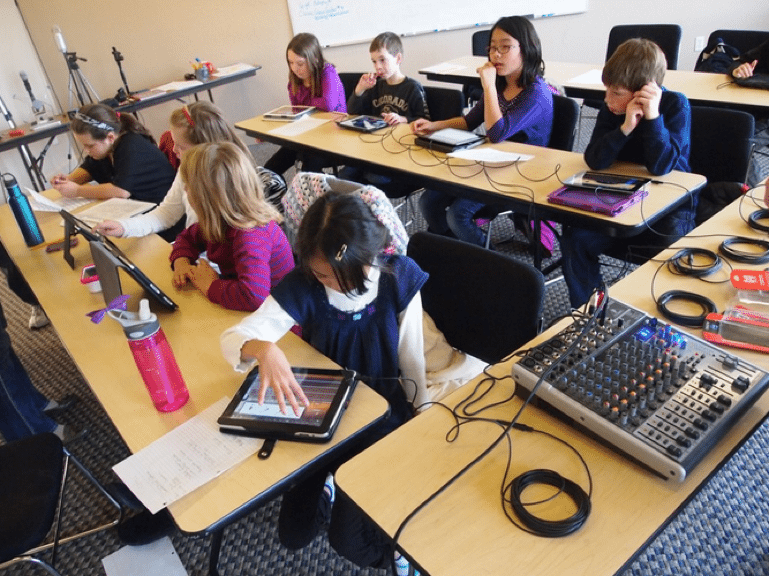
[Photo source: KleinSpiration blog http://kleinspiration.com/5-ways-to-boost-technological-literacy-in-classroom/]
8. Cite your sources.
As your students in grades 2 and 3 learn more advanced writing skills, researching facts for their essays becomes a necessary skill. Introduce your students to online searching with some of the kid-safe search tools, such as kidsearch.com or KidsClick.org. If your younger students aren’t quite ready for online research, try showing them statements on strips of paper about a topic you are studying and ask them to sort them into True and False piles. They can then use the details in the True strips for their writing assignments. This practice in evaluating information will help when they eventually start doing research online.
9. Suggest story starters.
Sometimes all it takes is a clever prompt to get your students writing and practicing their typing skills. Scholastic’s Story Starters website offers creative writing prompts for grades K–6 with adventure, fantasy and sci-fi themes. Once students choose a genre, they spin the wheel to generate an endless supply of imaginative story starters. Who wouldn’t want to make a to-do list for a grumpy knight who is afraid of bananas or to describe the house of a laughing fish who goes to school on the moon? Students then choose to write their stories in notebook, letter, newspaper or postcard format. The application tracks the number of words written and awards finished work with a fun animation and the ability to download or print the results. Kids may enjoy the tool so much that they’ll forget they are building their writing skills at the same time.
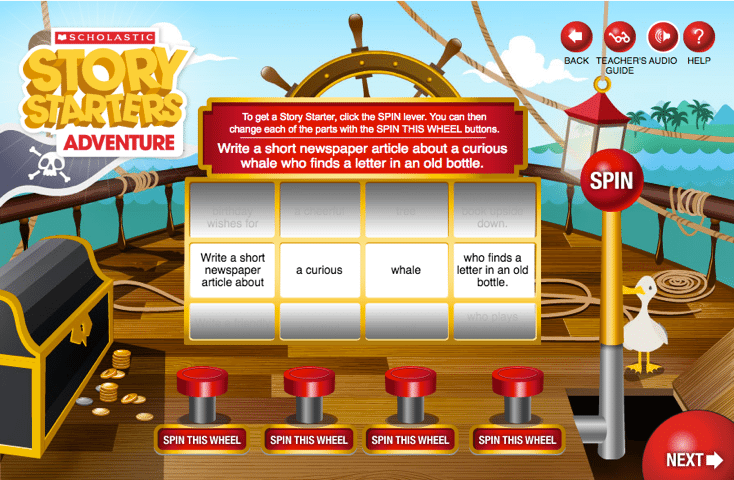
10. Make the writing come alive.
Just as in the Daily Profit newspaper in the Harry Potter series, your students can create written text that comes alive as you read it. With the Augmented Reality (AR) app Aurasma, students can overlay animations or live video definitions, pronunciation, oral book reviews, and more to illustrate their stories, journal entries, or the classroom word wall. Lorraine R. likes to group students and have them invent tools for a superhero—one for defense, one for transportation and one for escaping danger. She then has students write a story using all three tools. With Aurasma, they can then let the reader choose which path of the story to follow. Check out TwoGuysAndSomeipads for more ideas on how to incorporate Aurasma into your classroom.

